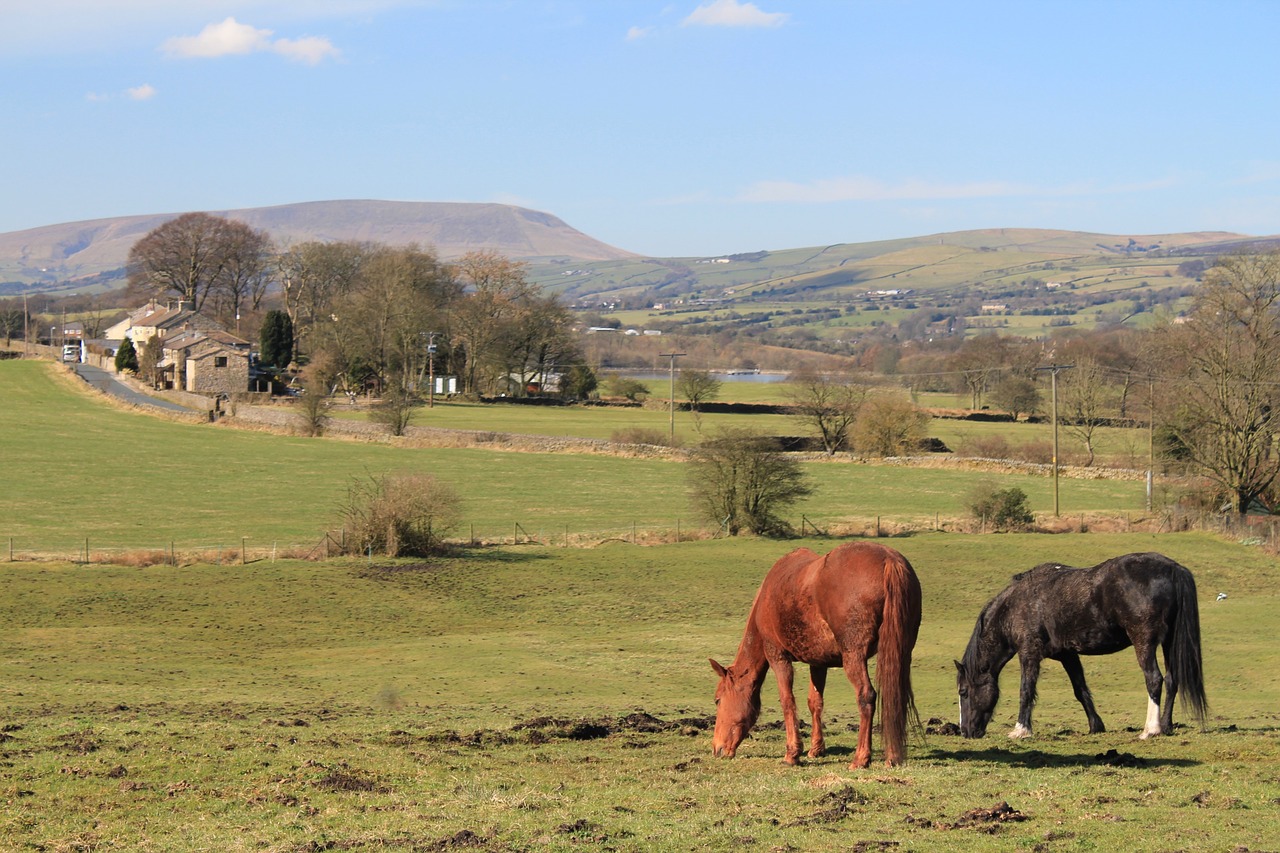These History students at Liverpool Hope University have been sharing their research on witchcraft… just in time for Halloween.
Kelsea Rees is studying for a Masters in History at Hope, her dissertation focused on the perception of magic and witchcraft in Wales between 1560 and 1700.
Meanwhile fellow Masters student Andrew Workman turned his eye to the situation across the border - his dissertation entitled, ‘Religion and accusation: A comparative study of witch-trials in Early Modern England.’
As Kelsea and Andrew point out, between 1484 and 1750, more than 200,000 witches were tortured, burned or hanged in western Europe.
Between 1645 and 1646, the infamous Matthew Hopkins - the so-called Witchfinder General - rounded up and executed some 300 witches in England’s East Anglia alone.
And Kelsea says the landscape in Wales was markedly different compared with the ‘witchunts’ experienced in England.
She explains: “I was really surprised at the lack of witch persecution in Wales. Only eight witches were found guilty, and there were only ever five executions. That figure could quite easily be the result of just one trial in England.
“And there’s a couple of reasons for this - chiefly, the courts were overwhelmed with thieves.
“Between 1550 to 1600 there were 60,000 thieves brought to court, and 4,000 were executed. It was a thief hunt, not a witch hunt.
“The other reason is that 95 per cent of Welsh communities spoke only Welsh and were Catholic. That made a huge difference compared with Protestant communities in England.
“The Catholic Welsh had nothing to fear from witchcraft. They embraced the magical side of religion. The word ‘witch’ had never really existed in Wales either, so no-one really understood what one was.”
In her research - which has been picked up widely in the media this week - also revealed how all of the witch executions in Wales took place in the north of the country.
And the bleak judgements were delivered by separate ‘Circuits’ - or court jurisdictions.
The ‘Chester’ circuit looked after Flint, Denbigh and Montgomery while the ‘North Wales’ circuit looked after Anglesey, Caernarvon, and Merioneth.
Those two circuits alone were responsible for all of those executions.
And the last of which came in 1655 - when suspected witch Margaret ferch Richard of Beaumaris, was hung in Beaumaris, Anglesey.

(Beaumaris castle, pictured above)
Kelsea says: “Margaret was a local charmer, but also a widow - one of the apparent ‘common traits’ of a witch.
“There’s only a small amount of information about the supposed bewitching because the court records only provide a basic description.
“All we know is that a ‘Gwen’, wife of Owen Meredith, fell ill and died - and the finger was pointed squarely at Margaret.
“Because these trials were so rare, a lot of judges at the time didn’t really know what to do with them. Another judge might have acquitted Margaret, but in this case she was found guilty and executed.”
Andrew’s research has also been picked up extensively by the media in the run up to Halloween - including Belfast Live and MyLondon.
In a conversation with the Hope press team, Andrew revealed tantalising details of some of England’s most high-profile witch trials.
He described how being grumpy and antisocial could get you hanged - but how being labelled a witch might actually be beneficial to some.
He revealed: “So-called witches often developed a reputation for magic over a prolonged period of time because of the way they behaved. And this could start off as simple anti social behaviour, not sorcery. You might walk past an old, poor woman, for example, and they might ask you for money or food.
“If you say no, they might curse and get angry at you, swearing revenge and saying they hope your toes fall off. It might be that they’re just old and cantankerous. But, four months down the line, if you develop foot pain, you might then attribute it to the grumpy lady you encountered. And that could lead to accusations of witchcraft. It’s ludicrous - but this is what could - and often did - take place.
“Being a ‘witch’ wasn’t all bad - you could make money from it. You have a group of people known as ‘cunning folk’ who claimed to have witchcraft powers but which were used for good. If the community had a problem, the cunning folk would step in to help. It might be that a family member had fallen ill due to be a ‘bewitchment’.
“The ‘good’ village witch would then be approached for help in a bid to find a remedy. There were gruesome ‘witch cakes’, often made using the victim’s urine, which the victim would then eat in order to make them feel better. We actually have cases where these cakes were said to have healed people seemingly on death’s door.”
He also describes the famous Pendle Witches case as ‘the ancient equivalent of a Facebook row that got way, way out of hand…’
This trial took place in 1612 around the area of Pendle Hill, just north of Burnley, Lancashire.

(Pendle Hill, as it looks today)
A sum total of twelve people were charged with the murders of ten people by the use of witchcraft. Eight women and two men - Alizon Device, Elizabeth Device, James Device, Anne Whittle, Anne Redferne, Alice Nutter, Katherine Hewitt, John Bulcock, Jane Bulcock and Jennet Preston - were hung while a ninth woman, Elizabeth Southerns, died while awaiting trial.
Andrew explains: “The witches were essentially from two families, one headed by Elizabeth Southerns, aka ‘Demdike’, and the other headed by Anne Whittle, aka ‘Chattox’. Both ladies were 80 years old at the time of their trial and renowned witches in the area.
“Initially they were quite good friends, but it got to the point where they hated each other.
“The daughters and granddaughters of Demdike and Chattox got involved in a blazing row, with both sides hurling accusations at each other - ‘You’re a witch!’, ‘No, you’re a witch!’.
“Other people in the area got to the point where they were just sick of the feud and it ended up going before a judge. Ironically, witches accusing other witches of being witches was seen as surefire evidence of witchcraft! Sentencing came very easy.
“Some in the community were glad to be rid of the ‘witches’, but others were disappointed as Demdike and Chattox had previously helped out in the community, treating sick cattle and the likes.”
** To find out more about studying History at Hope, head here



